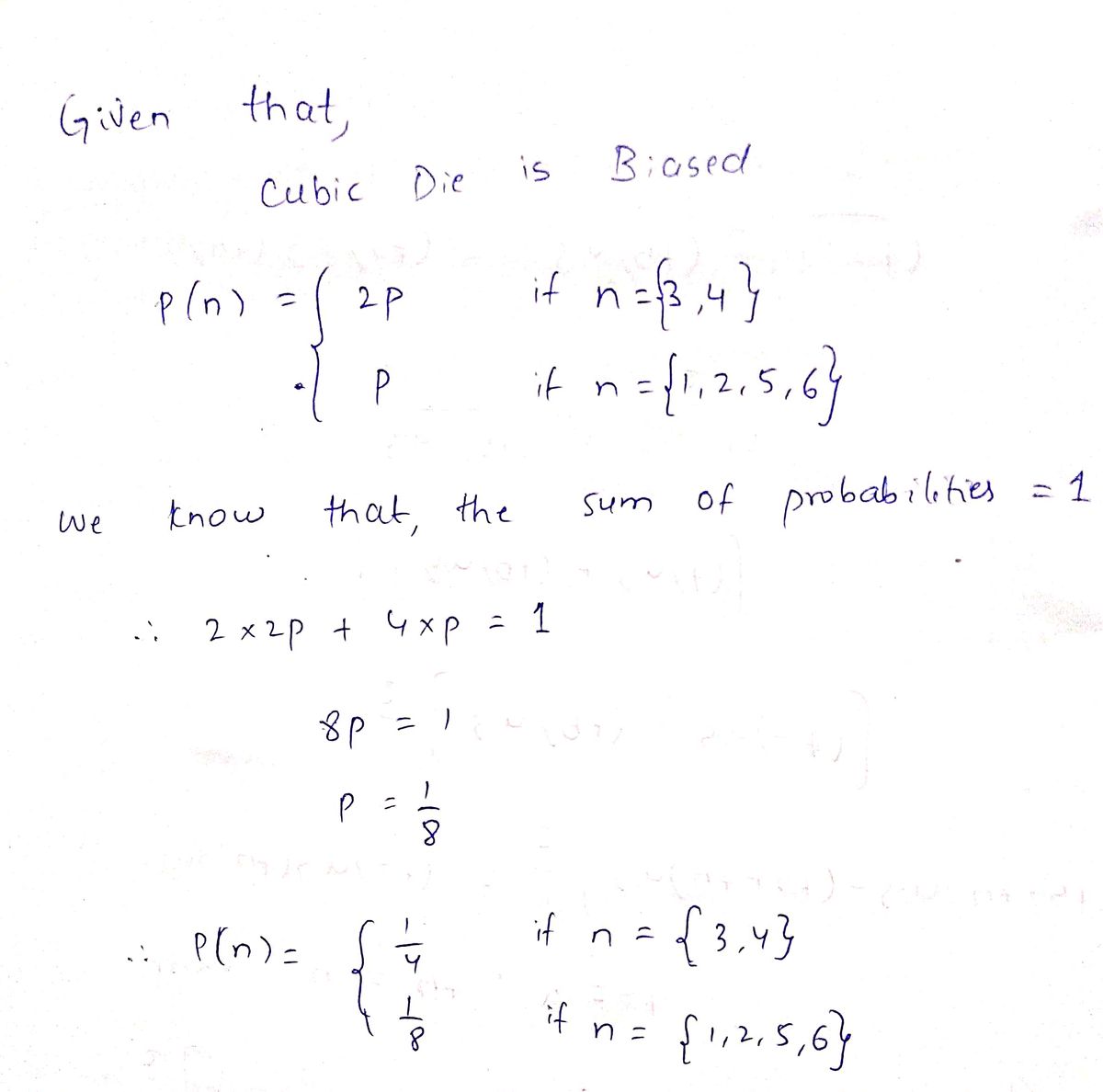A cubic die is biased, so that for each integer n, 1 ≤n ≤6, the probability of the event {n} is p({n}) = 2p if n=3 or n=4 and p({n}) = p, otherwise. a) What is the expected number of times the die comes up 6, when it is rolled 32 times? b) What is the expected number of times the die must be rolled until the first 6 comes up?
A cubic die is biased, so that for each integer n, 1 ≤n ≤6, the probability of the event {n} is p({n}) = 2p if n=3 or n=4 and p({n}) = p, otherwise. a) What is the expected number of times the die comes up 6, when it is rolled 32 times? b) What is the expected number of times the die must be rolled until the first 6 comes up?
A First Course in Probability (10th Edition)
10th Edition
ISBN:9780134753119
Author:Sheldon Ross
Publisher:Sheldon Ross
Chapter1: Combinatorial Analysis
Section: Chapter Questions
Problem 1.1P: a. How many different 7-place license plates are possible if the first 2 places are for letters and...
Related questions
Question
A cubic die is biased, so that for each integer n, 1 ≤n ≤6,
the probability of the
p({n}) = p, otherwise.
a) What is the expected number of times the die comes up 6,
when it is rolled 32 times?
b) What is the expected number of times the die must be rolled
until the first 6 comes up?
Expert Solution
Step 1

Trending now
This is a popular solution!
Step by step
Solved in 2 steps with 2 images

Recommended textbooks for you

A First Course in Probability (10th Edition)
Probability
ISBN:
9780134753119
Author:
Sheldon Ross
Publisher:
PEARSON


A First Course in Probability (10th Edition)
Probability
ISBN:
9780134753119
Author:
Sheldon Ross
Publisher:
PEARSON
